First I’d like to say, “Thank you, el Niño.”
I haven’t seen the Llano River or the milkweed and other wildflowers this robust since 2010, the year before the historic Texas drought hit our state.
A weekend in the Texas Hill Country included a series of thunderstorms, warm temperatures and a bounty of roadside milkweed as well as a variety of Asclepias species on our property we haven’t seen in years. Our caterpillars literally had a milkweed buffet awaiting them–four different Asclepias species, the Monarch butterfly host plant.
Antelope horns, Asclepias asperula, made a hearty showing in front of our porch. Under the breezeway deck, a lone Texas milkweed, Asclepias texana, was already sporting blooms. Down the trail, Pearl milkweed vine, Matelea reticulata, the lovely climber that boasts an attractive pearl-dotted flower, snuck up a nearby pencil cactus. Along the banks of the Llano River, Swamp milkweed, Asclepias incarnata, the pink-blooming host plant offered hearty stalks, broader-than-usual leaves and new stands in places we’ve never noticed.
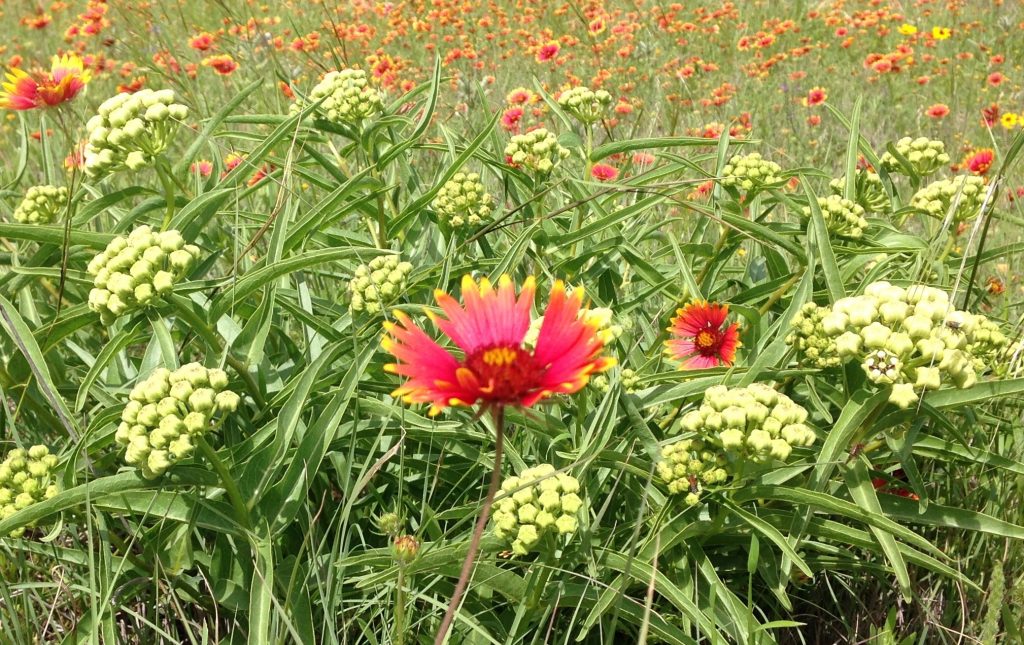
Antelope horns and Indian blanket dotted Highways 1871 and 87 in the Texas Hill Country this weekend. Photo by Monika Maeckle
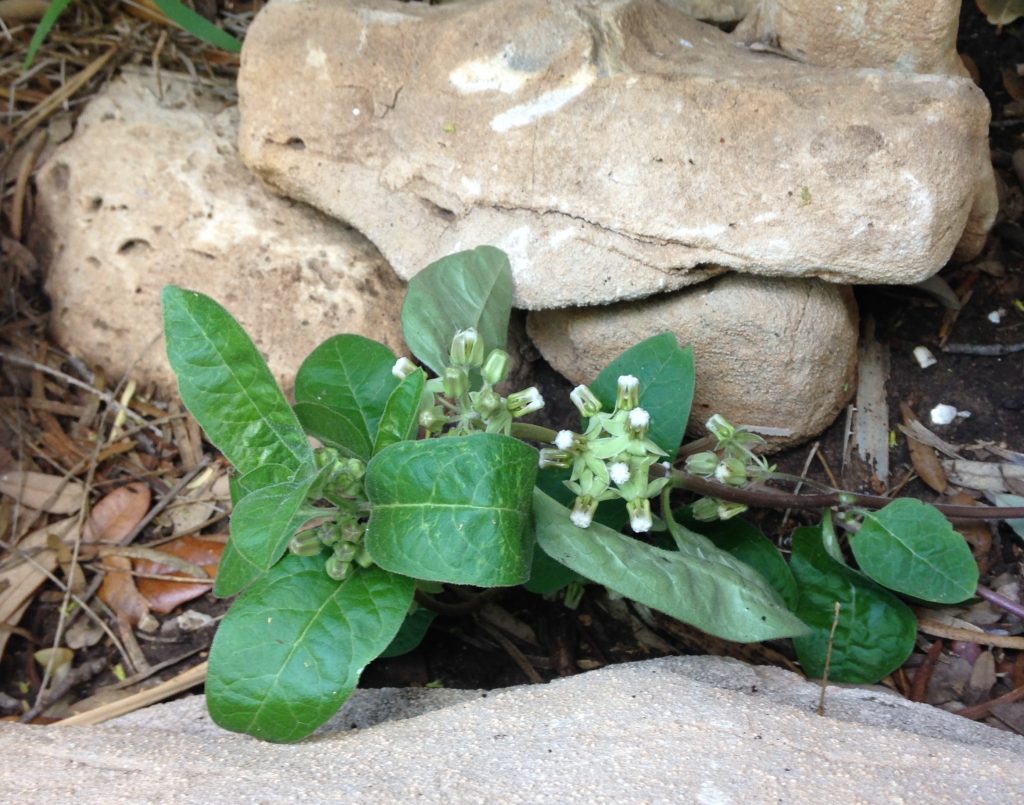
Texas milkweed, what a trooper–no water, little light, growing under the breezeway. Haven’t seen this one in years. Photo by Monika Maeckle
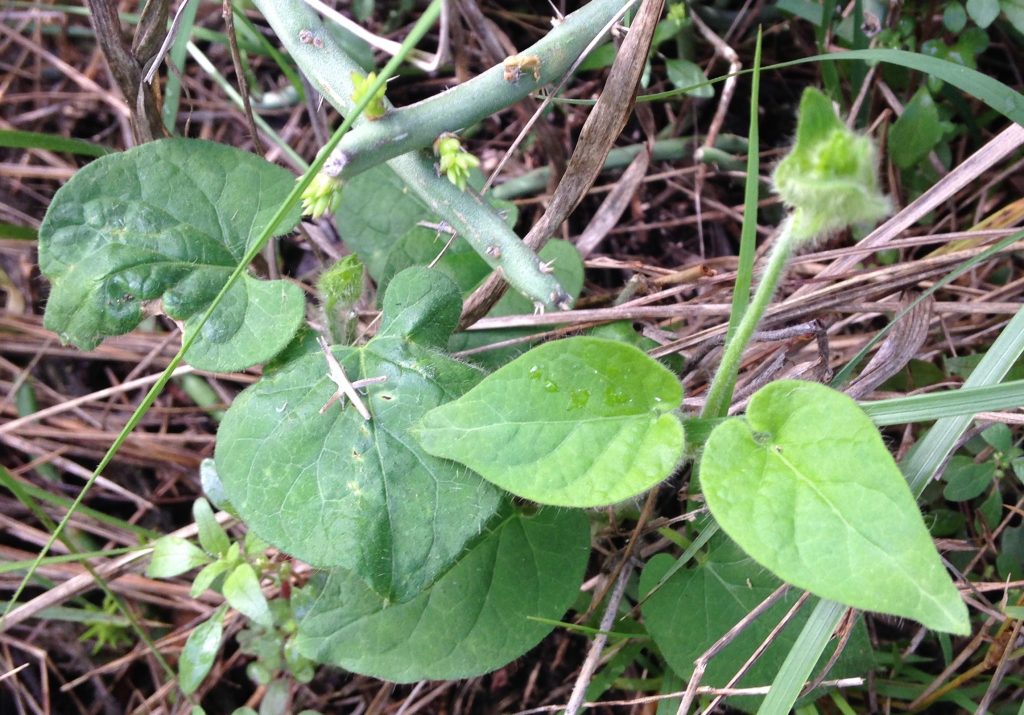
Along the trail, this Pearl milkweed vine peeked above the mulch to climb a pencil cactus. Can’t wait to see the flowers. Photo by Monika Maeckle
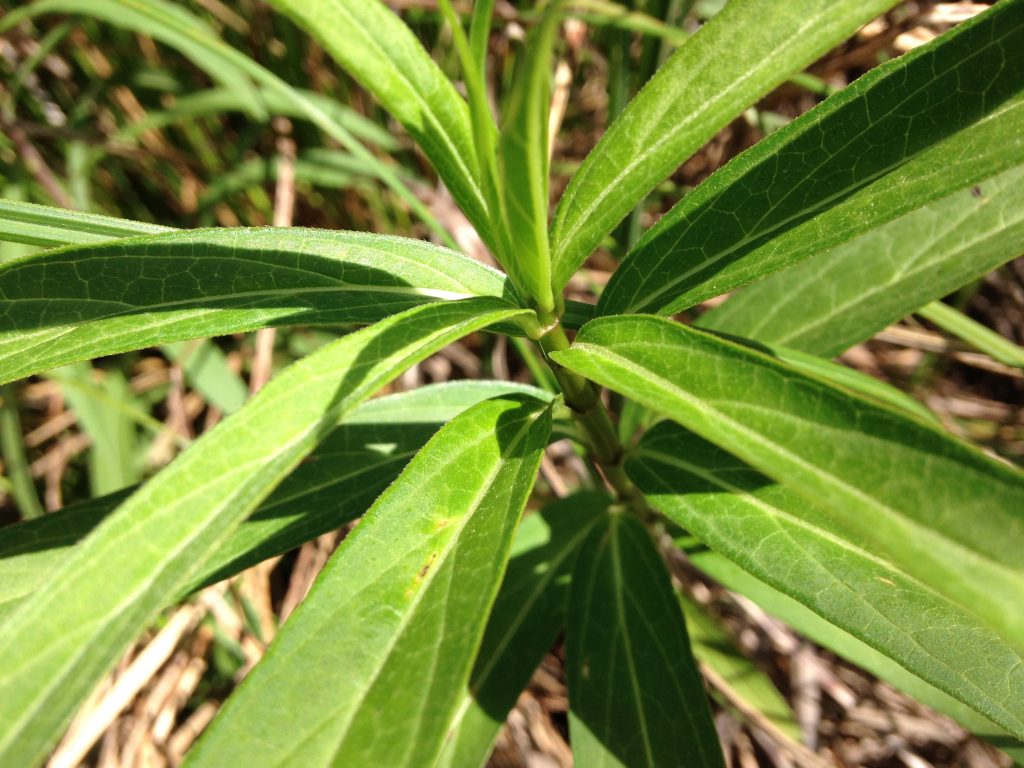
Robust stands of thick Swamp milkweed in new places along the Llano River. Gotta love it. Photo by Monika Maeckle
Only the Swamp milkweed hosted caterpillars and eggs. The chubby chutes reached out of the Chigger Islands like thin stalks of asparagus. What a heartening improvement over the scrawny plants of the past few years.
Only one Monarch was spotted flying this weekend, but others had obviously passed through since their offspring were observed in various stages–eggs, just-hatched cats, second instar larvae and fifth instar caterpillars ready to bust their stripes and go chrysalis.
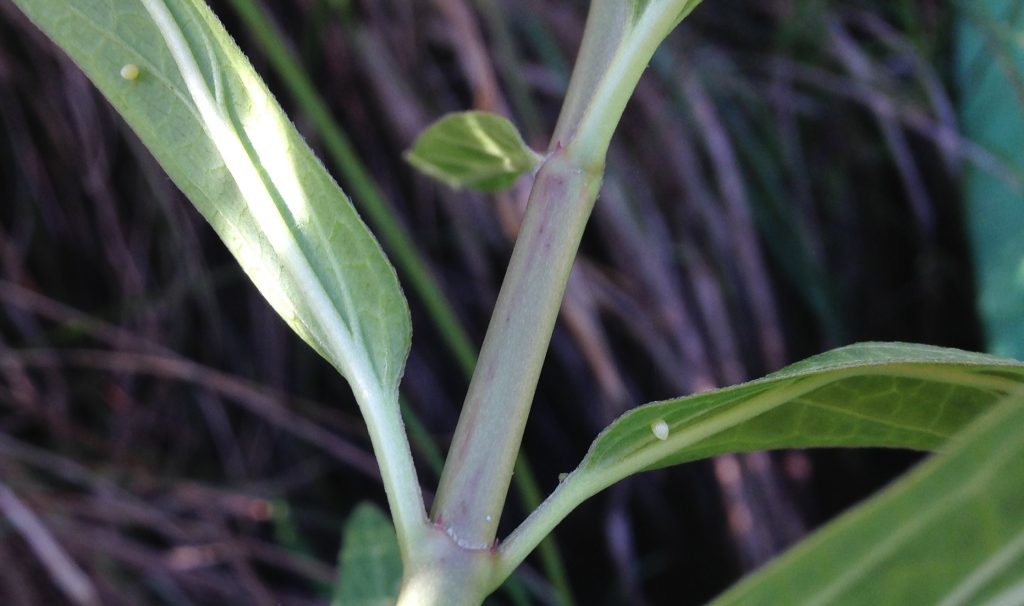
Two Monarch eggs over easy–well, under the leaves of Swamp milkweed, on the Llano. Photo by Monika Maeckle
The wildflower display along Highways 1871 and 87 around Mason and Fredericksburg was among the most spectacular I’ve seen in recent memory. Some mysterious (to me) newcomers joined the bouquet, like the white flower above showing in our watershed. Anybody know what it is?
Prediction: 2015 will be a fantastic year for butterflies, Monarchs in particular. While the first three months of 2015 clocked as the hottest first quarter in history, it’s been mild and wet in our neck of the woods And that bodes well for butterflies and other pollinators.
Related posts:
- Late But Great Wildflowers to Greet Monarchs and other Pollinators
- Monarch Butterfly News Sparks Extreme Interest in NAtive Milkweeds
- Tropical Milkweed: To Plant it or Not, it’s not a Simple Question
- Texas Parks and Wildlife Launches Milkweed Monitoring Project
- Pollinator PowWow Draws 100s from Texas and Beyong
- Mega-Grower Colorspot to Consider Growing Chemical Free Milkweed
- Q&A with Dr. Lincoln Brower
- Survey: Monarch Butterfly Enthusiasts will Pay More for Clean, Native Milkweeds
- MIlkweed Guide for Central and South Texas
- Endangered Species Act Wrong Tool for the Job of Monarch Butterfly Conservation?
- How to Get Native Milkweed Seeds to Germinate
- How to Raise Monarch Butterflies at Home, Part One
Like what you’re reading? Follow butterfly and native plant news at the Texas Butterfly Ranch. Sign up for email delivery, like us on Facebook, or follow us on Twitter, @monikam.

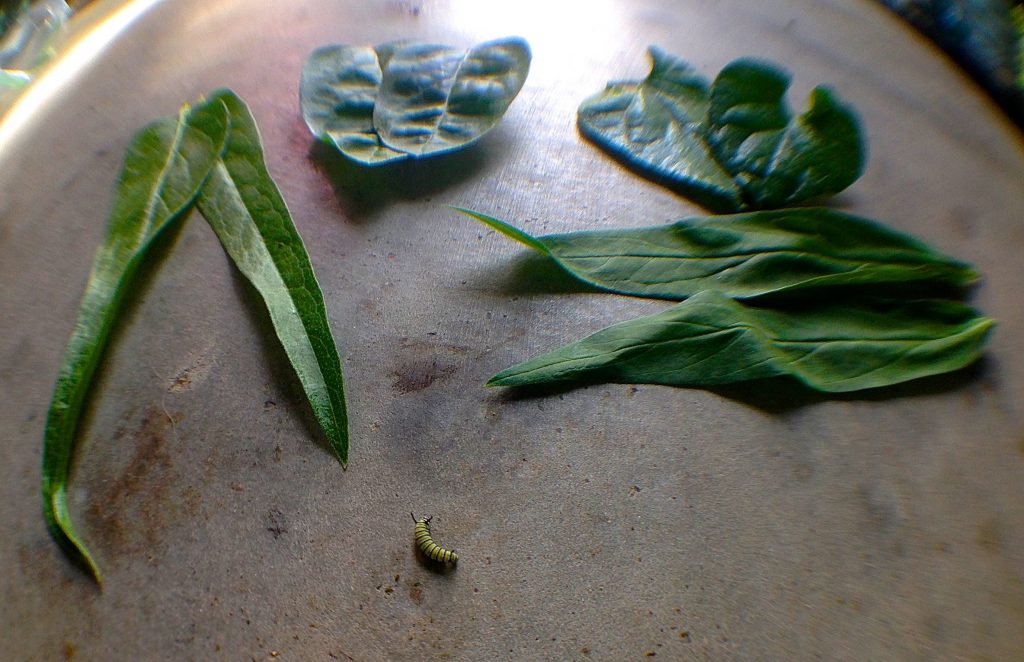
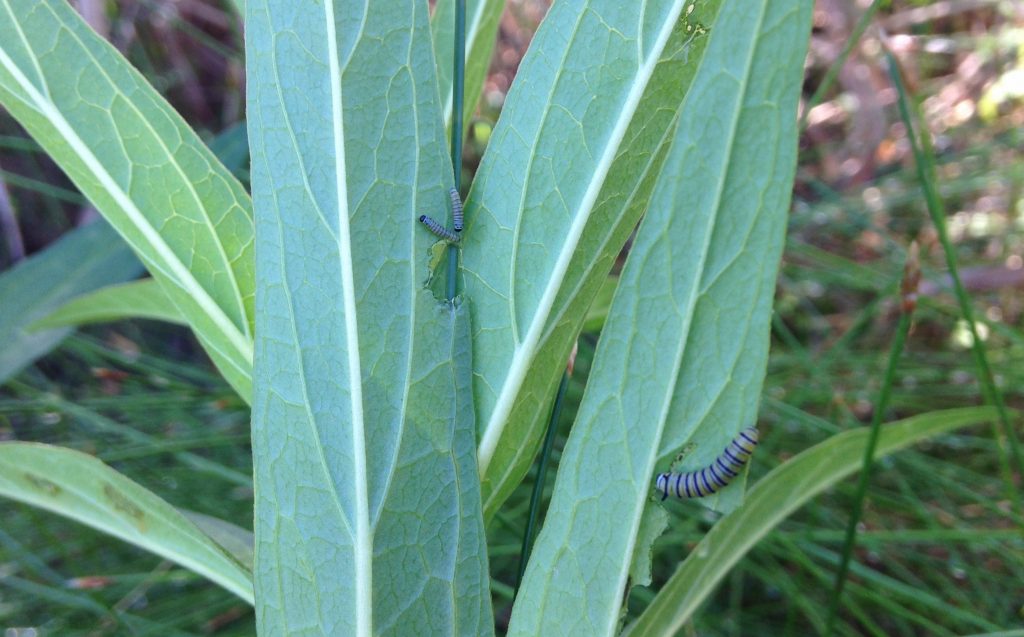
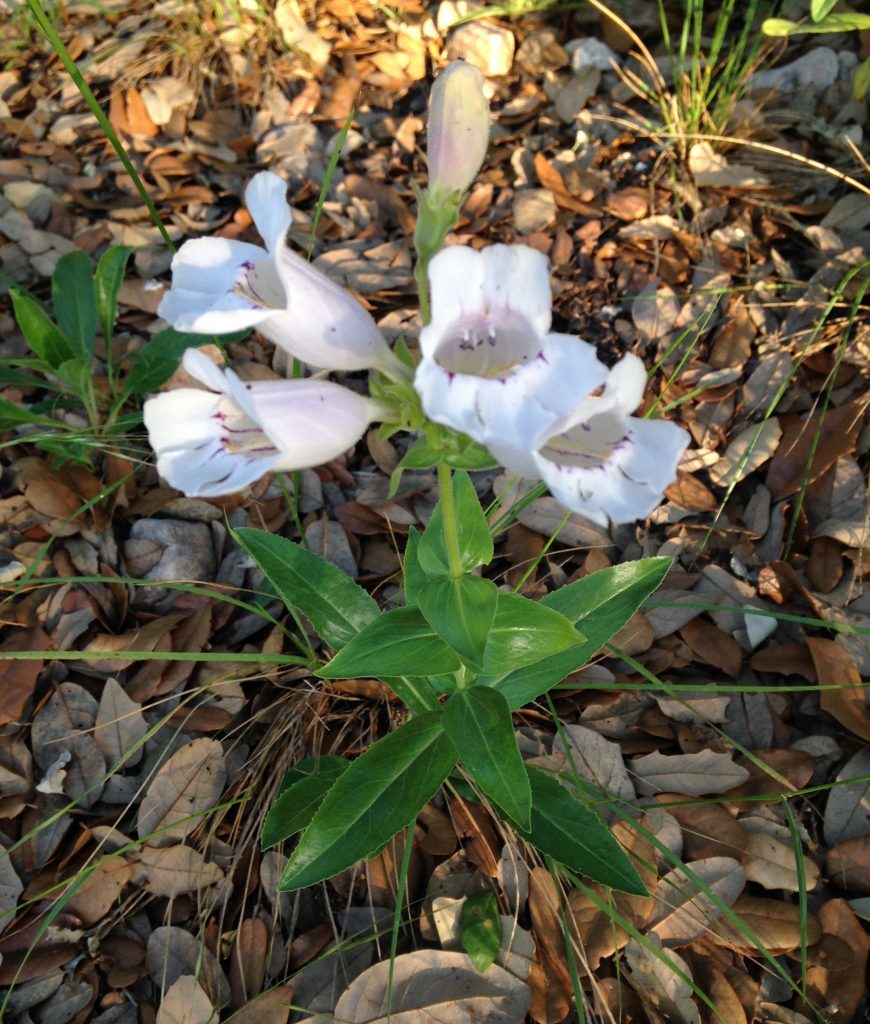
Penstemon cobaea
Otherwise known as foxglove beardtongue.
This plant you are asking about looks like Penstemmon (Beardtongue) to me, but I could be wrong.
Hmm. Thanks, everyone. Odd that we have never had it before. Bonus: I just read that it’s the host plant to Dotted Checkerspot. Gracias!
–MM
Thank you for your post and beautiful pictures. Here in Michigan I am anxiously awaiting the milkweed and monarchs. Glad to hear things are looking good down there in Texas. 🙂
There are large stands of Penstemon cobaea along Rt. 281 near Hico.
The milkweed recovery from the worst drought in Texas history including , of course, the milkweed recovery at your ranch will result in a tremendous increase in overwintering butterflies in Mexico with a few summer and fall rains. Rain has always determined the amount of monarchs in the mountains of Mexico.
I have to thank my son, Leslie Gilson for sending this site to me.
Love the newsletter and all your pictures. We did a wildflower drive last weekend and saw alot of Antelope Horn milkweeds alongside the road. It looks like TXDOT has planted milkweed seeds along with the bluebonnets. The last picutre in your newsletter, the white flower, is a Penstemon. I believe it is a Penstemon digitalis, the Foxglove Beard Tongue Penstemon. We moved to New Braunfels from Santa Fe in 2003 and had lots of penstemons in our yard.